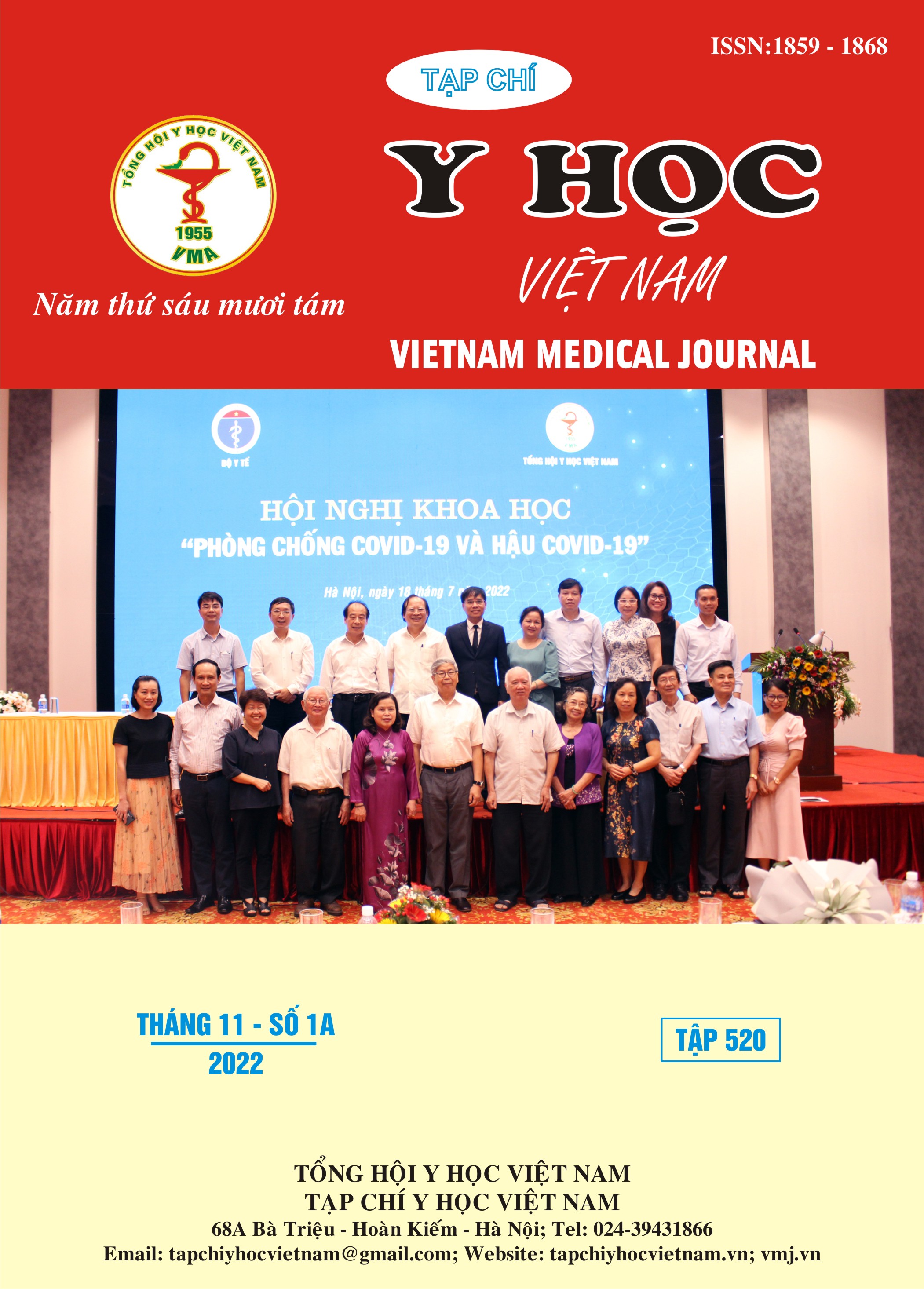THE SITUATION OF CONTRACEPTIVE USE AMONG WOMEN WITH UNWANTED PREGNANCIES WHO COME TO HAVE ABORTIONS AT HANOI OBSTETRICS & GYNECOLOGY HOSPITAL IN 2020 AND SOME RELATED FACTORS
Main Article Content
Abstract
Describe the current status of contraceptive use and some related factors in the group of women with unwanted pregnancies. A cross-sectional descriptive study was conducted on 396 women with unwanted pregnancies who had an abortion at Hanoi Obstetrics & Gynecology Hospital in 2020. Results: Women using contraceptive methods accounted for 74.2% in the study group, and using modern contraceptives accounted for the majority (87.4%) compared with traditional contraceptive methods. Usage rate: male condoms (36.4%), emergency contraception pills (29.8%), contraceptive implant (15.4%). The group of 15-19 years has a higher probability of using contraceptive methods than the other groups. Women with enough surviving sons and daughters tend to use contraceptive methods 3.4 times higher than those with only one child. Married women and lovers who consider this pregnancy to be unintended are 1.8 times more likely to use contraception than the other group. Women with unintended pregnancies who come to hospital for abortions have a high failure rate of modern contraceptive use.
Article Details
Keywords
unwanted pregnancy, contraception, pregnancy, Hanoi Obstetrics & Gynecology Hospital
References
2. Grimes DA, Benson J, Singh S, et al. Unsafe abortion: the preventable pandemic. The Lancet. 2006;368(9550):1908-1919. doi:10.1016/S0140-6736(06)69481-6
3. Hosseini-Chavoshi M, Abbasi-Shavazi MJ, Glazebrook D, McDonald P. Social and psychological consequences of abortion in Iran. Int J Gynecol Obstet. 2012;118:S172-S177. doi:10.1016/S0020-7292(12)60018-6
4. Sach-KQDT-BD-dan-so-2016.pdf. Accessed December 25, 2020. https://www.gso.gov.vn/wp-content/uploads/2019/03/Sach-KQDT-BD-dan-so-2016.pdf
5. Bellizzi S, Mannava P, Nagai M, Sobel HL. Reasons for discontinuation of contraception among women with a current unintended pregnancy in 36 low and middle-income countries. Contraception. 2020;101(1):26-33. doi:10.1016/j.contraception.2019.09.006
6. Nguyễn Thanh Hưng, Trần Thị Lợi, và cộng sự. Kiến thức, thái độ và hành vi về các biện pháp tránh thai tạm thời ở phụ nữ phá thai ngoài ý muốn tại Bệnh viện Từ Dũ năm 2015: Một nghiên cứu cắt ngang mô tả. 2019;1:200-202.
7. Lê Thị Kim Liên, Lê Trí Khải, Đoàn Thị Thùy Dương. Thực trạng sử dụng biện pháp tránh thai của phụ nữ Raglai có chồng và một số yếu tố liên quan tại xa Khánh Hiệp, huyện Khánh Vĩnh, tỉnh Khánh Hòa, năm 2018. Published 2018. Accessed September 9, 2021.
8. Bhandari N, Shrestha G, Thakuri P. Study of factors affecting contraceptive use among married women of reproductive Age. J Coll Med Sci-Nepal. 2014;9(4):24-29. doi:10.3126/jcmsn.v9i4.10233
9. Võ Minh Tuấn, Thai Lina. Đánh giá kiến thức, thái độ về các biện pháp tránh thai hiện đại trên phụ nữ đến nạo hút thai tại bệnh viện Từ Dũ 2017. Tap chi Y Hoc Thanh Pho Ho Chi Minh. Published 2018. Accessed October 6, 2021.


